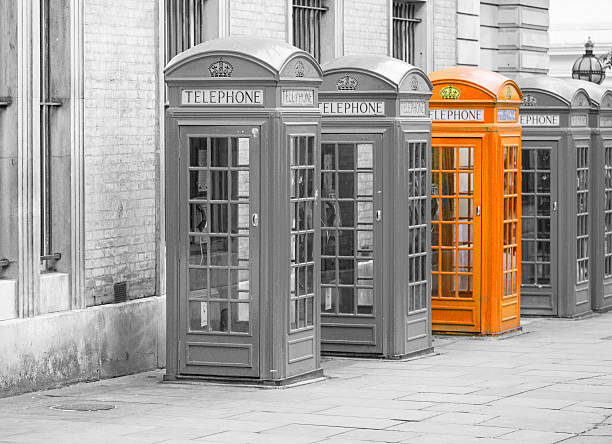July 16, 2023

The famous red phone booths of London may be more of a tourist attraction
than a useful resource now that most customers don't make use of them, but this
doesn't mean they're ineffective. Two LSE graduates have converted six of the
booths into solar-powered charging stations.
Henri Nyakarundi is an American Entrepreneur, who was born in Rwanda, Burundi
and grew up there before moving to America. He's developed solar-powered
charging stations for mobile phones. The kiosks are kept locked at night and are
inspected every day.
A minimum of 100 mobile phones are charged each day
The world-famous red telephone booths found in London, England are now
serving a different purpose. The iconic red payphones have now been converted
into mobile charging stations that are powered with solar power. The station can
charge up to 100 phones a each day for free make use of. Booths have been
painted green with an 86cm-long solar panel that is mounted in the ceiling.
Advertising in the kiosks covers the expenses of providing the service. The two
brains behind the idea, Harold Craston and Kirsty Kenney, won five thousand
pounds (approximately $8,000) in cash through Mayor Boris Johnson's Low Carbon
Entrepreneur competition this summer.
These aren't the only ones providing old phone booths with a second life.
Some booths that were unused are now mini-library, art studios and medical
cabinets for emergencies. Some booths have been converted into dual-purpose
charging stations to charge electric vehicles.
Free
The traditional phone booths have been able to fade from our sidewalks,
they're being transformed into cafes, art installations as charging stations.
Latest to join in the fray is a shady green London phone booth that allows users
to charge their smartphones.
This week, the first "solarbox" located on Tottenham Court Road was revealed.
These booths are kept locked at night and are inspected every day to avoid
vandalism. They are also available for use at no cost, although users will be
shown advertisements on their screens while waiting for phones to
recharge.
The idea was dreamed up by two graduates of the London School of Economics,
Harold Craston and Kirsty Kenny. This eco-friendly concept won two spots in the
Mayor of London's Low Carbon Entrepreneurship Competition. The stations will be
able to charge as many as 100 phones per day. The costs of operating are paid
for by advertisements at the kiosk. We hope the new charging stations will
alleviate the worst fears of tourists - a dead cell phone. In http://www.ildottoredeicomputer.com/2015/01/un-viaggio-nelle-cabine-telefoniche-di.html,
you are able to understand solar powered telephone charger.
The aesthetics of the product
The iconic red telephone booths of London were long considered to be a city
icon. As mobile phones became more well-known, the booths quickly became
obsolete. The booths were quickly rendered obsolete as mobile phone usage was
soaring.
The bright, green Solarbox that was revealed at Tottenham Court Road this
week is capable of charging up to 100 mobiles a day and can give a battery a 20%
boost in 10 minutes. The kiosks that have a solar panel on the top and
advertisements displayed to their users are not only free but also paid for by
advertisers.
It's not the only abandoned phone booths that have been put to a new purpose.
Across the world, abandoned booths were transformed into libraries, art spaces
and even defibrillators. This project is perhaps the most creative yet. And, as
a bonus this project will keep the famous booths visible for years to
come.
The most terrifying nightmare for tourists
The famous red phone booths of London are a landmark of the city. The advent
of smartphones has made the booths virtually inoperable. Two entrepreneurs are
now utilising the existing booths to create the first solar-powered
charging station designed for mobile phones.
The sunny green Solarbox was launched this week at Tottenham Court Road and
has already had six customers. These 86 centimeter-high kiosks are completely
free and can charge up to 100 devices per day. It offers a 20 percent battery
increase in only 10 minutes. The kiosk's advertising will cover the cost of the
kiosk.
This innovative approach is a solution for travelers who find themselves wandering around the city without a cell phone. A drained phone battery is not only annoying however, it could hinder travelers from getting the most out of their travels because they are unable to capture photos, locate restaurants or their translation software.
Posted by: VincentBusiness at
06:18 AM
| No Comments
| Add Comment
Post contains 746 words, total size 5 kb.
35 queries taking 0.0241 seconds, 65 records returned.
Powered by Minx 1.1.6c-pink.









